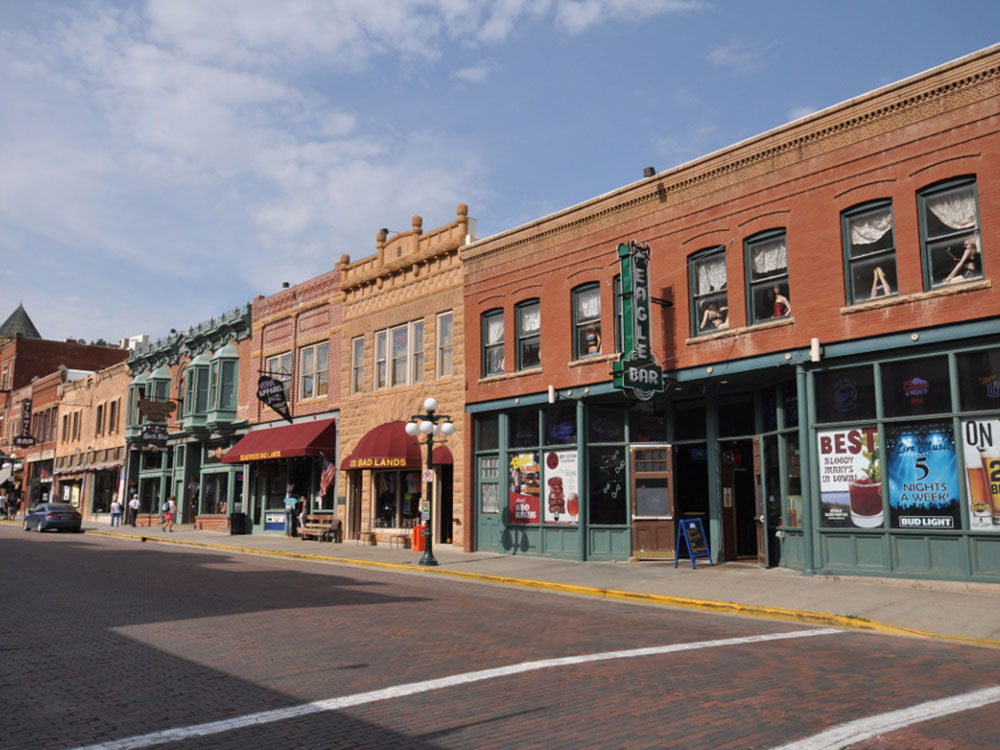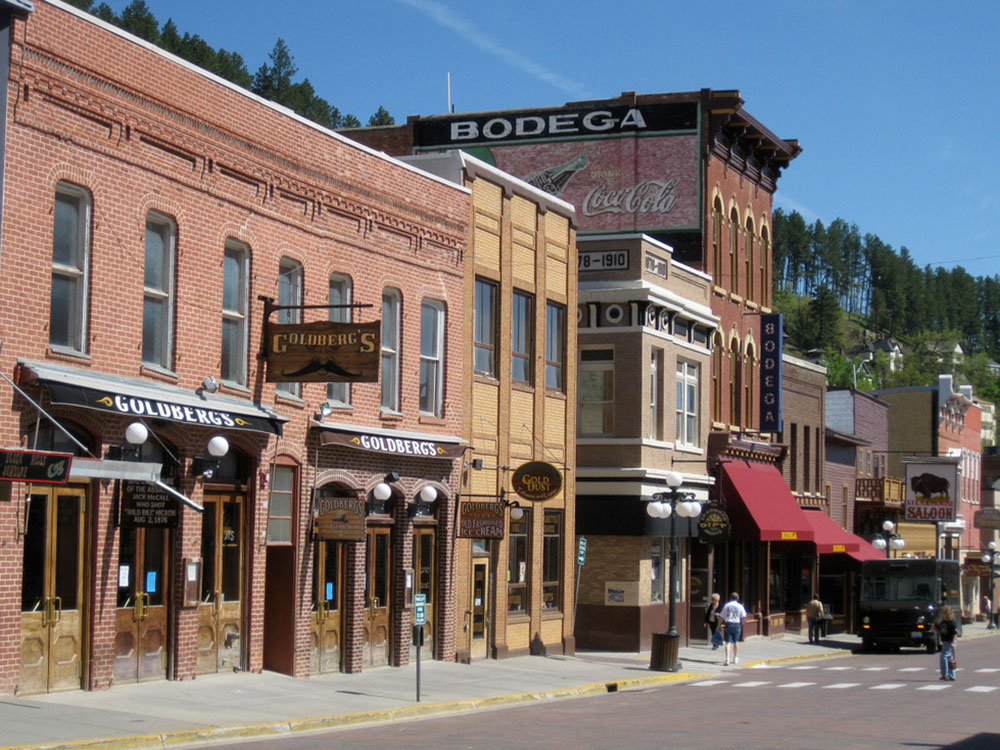General Information
Deadwood is a city in South Dakota, named by early settlers after the dead trees found in its gulch. The city had its heyday from 1876 to 1879, after gold deposits had been discovered there, leading to the Black Hills Gold Rush. At its height, the city had a population of 25,000, and attracted larger-than-life Old West figures including Wyatt Earp, Calamity Jane, and Wild Bill Hickok (who was killed there).

The entire town has been designated as a National Historic Landmark District, for its well-preserved Gold Rush-era architecture.
The settlement of Deadwood began illegally in the 1870s, on land which had been granted to the Lakota people in the 1868 Treaty of Fort Laramie. The treaty had guaranteed ownership of the Black Hills to the Lakota people, who considered this area to be sacred. The settlers' squatting led to numerous land disputes, several of which reached the United States Supreme Court.
Everything changed after Colonel George Armstrong Custer led an expedition into the Black Hills and announced the discovery of gold in 1874, on French Creek near present-day Custer, South Dakota. This announcement was a catalyst for the Black Hills Gold Rush, and miners and entrepreneurs swept into the area. They created the new and lawless town of Deadwood, which quickly reached a population of approximately 5,000. By 1877, about 12,000 people settled in Deadwood, while other sources put the peak number even at 25,000 in 1876.
In early 1876, frontiersman Charlie Utter and his brother Steve led to Deadwood a wagon train containing what they believed were needed commodities, to bolster business. The town's numerous gamblers and prostitutes staffed several profitable ventures. Madame Mustache and Dirty Em were on the wagon train, and set up shop in what was referred to as Deadwood Gulch. Madam Dora DuFran eventually became the most profitable brothel owner in Deadwood, closely followed by Madam Mollie Johnson.
Deadwood became known for its lawlessness; murders were common, and justice for murders not always fair and impartial. The town attained further notoriety when gunman Wild Bill Hickok was killed on August 2, 1876. Both he and Calamity Jane were buried at Mount Moriah Cemetery, as well as other notable figures such as Seth Bullock.
As the economy changed from gold panning to deep mining, the individual miners went elsewhere or began to work in other fields. Hence Deadwood lost some of its rough and rowdy character, and began to develop into a prosperous town.
The Homestake Mine in nearby Lead was established in October 1877. It operated for more than a century, becoming the longest continuously operating gold mine in the United States. Gold mining operations did not cease until 2002. The mine has been open for tours.
In 1961, the entire town was designated a National Historic Landmark, for its well-preserved collection of late 19th-century frontier architecture. Most of the town's buildings were built before 1900, with only modest subsequent development. The town's population continued to decline through the 1960s and 1970s. Interstate 90 bypassed Deadwood in 1964, diverting travelers and businesses.
Deadwood was the first small community in the U.S. to seek legal gambling revenue to maintain local historic assets. The state legislature legalized gambling in Deadwood in 1989, which generated significant new revenue and development.
In the summer, there are numerous trails for hiking, horseback riding, and mountain biking. The northern end of the George S. Mickelson Trail starts in Deadwood and runs south through the Black Hills to Edgemont. Several man made lakes, including Sheridan Lake, provide fishing and swimming. Spearfish Canyon to the north has many places to rock climb.
During the winter, two ski areas operate just a few miles outside of nearby Lead, South Dakota: Terry Peak and Deer Mountain.
This article uses material from the Wikipedia article "Deadwood, South Dakota", which is released under the Creative Commons Attribution-Share-Alike License 3.0
